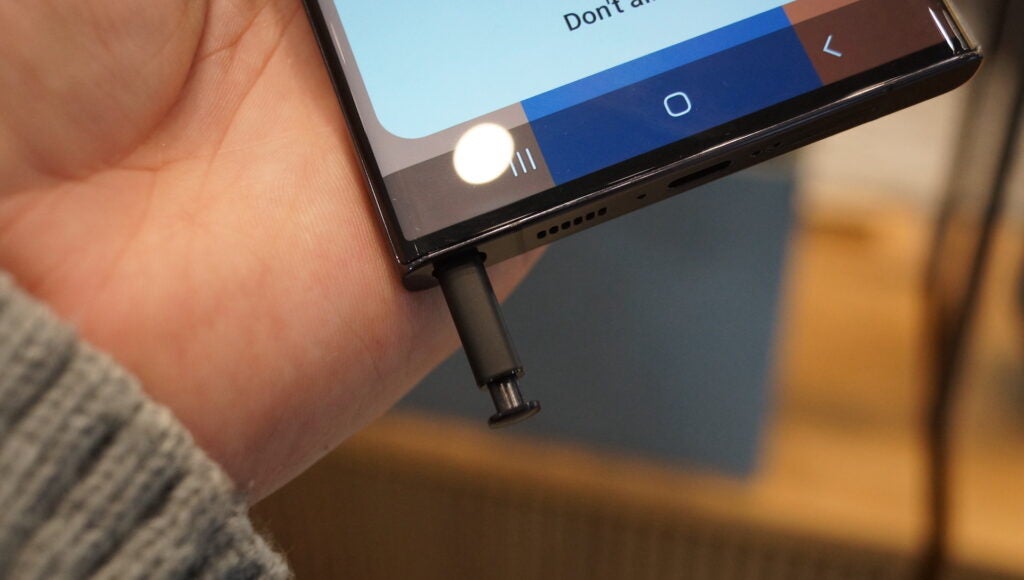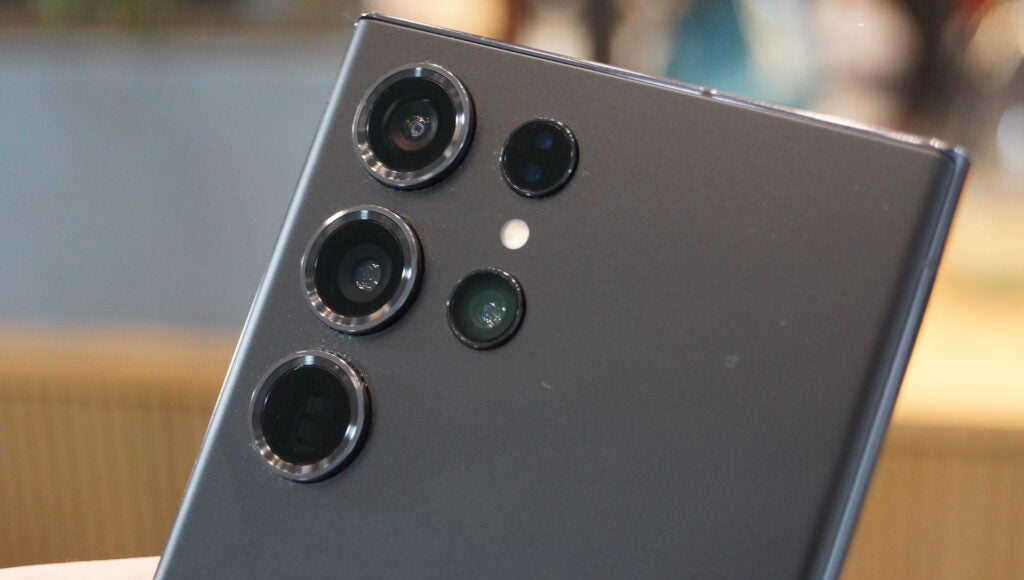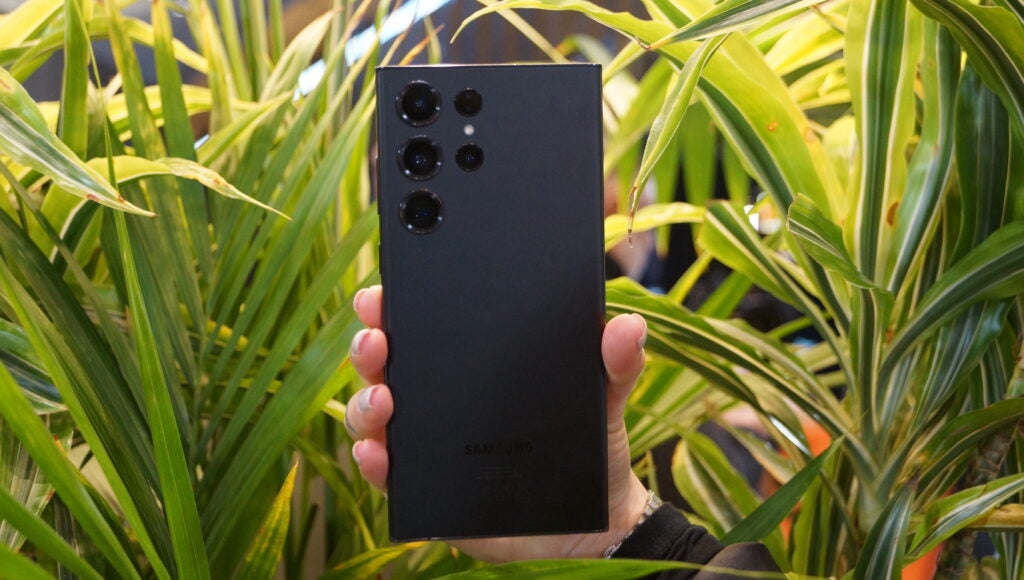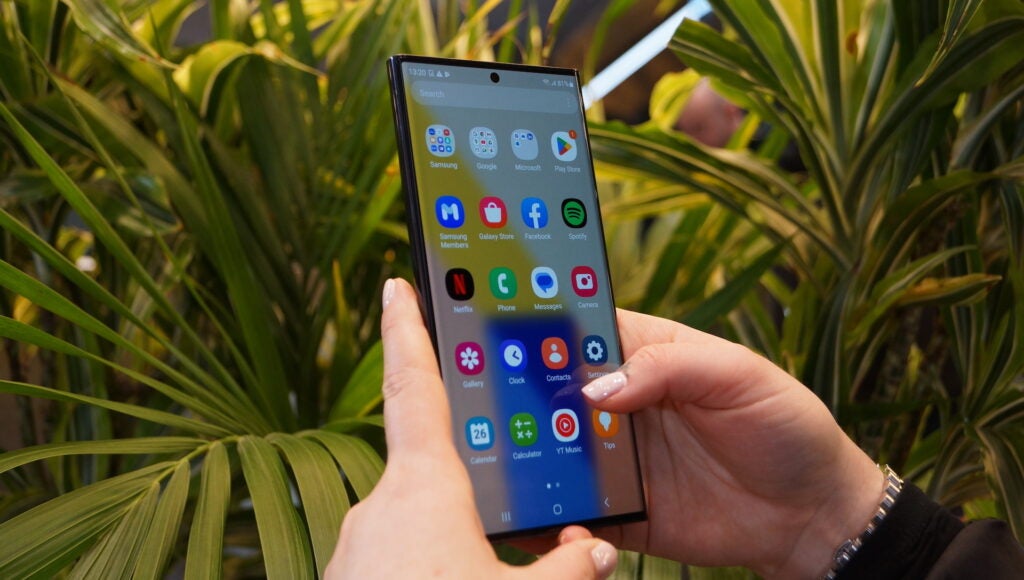It might be very similar to its predecessor, but there’s still a lot to like about the Samsung Galaxy S23 Ultra.
Key Features
-
200MP main cameraThe upgraded rear camera has potential, especially in low-light conditions -
Snapdragon 8 Gen 2 for GalaxyThe Galaxy S23 Ultra sports a unique top-end Snapdragon chipset exclusive to Galaxy devices -
Upgraded glass protectionCorning’s Gorilla Glass Victus 2 is said to be more robust against drops onto concrete
Introduction
The Samsung Galaxy S23 Ultra has just been revealed by Samsung, and I’ve already seen it in person.
Though the Galaxy S23 Ultra shares many similarities with its predecessor, upgraded features look to fix some of the biggest complaints with last year’s flagship. The question is, how does it perform in real life?
I was invited to a Samsung hands-on event prior to the launch of the new flagship, and here’s what I think about it so far.
Design and screen
- Tweaked, but largely similar, design
- Flatter display than S22 Ultra
- New glass protection
The first thing you might notice about the Samsung Galaxy S23 Ultra is that it doesn’t look all that different to the Samsung Galaxy S22 Ultra, and that’s essentially because it isn’t.
Think of the Galaxy S23 Ultra as more of a refinement of last year’s design, with tweaks like a slightly flatter front glass with less curvature to the edges to slightly expand the usable area of the 6.8in display and a slightly (read: ever so slightly) tweaked rear camera lineup with slightly thicker bezels around the camera. Hey, you’ve got to be able to tell the difference between the two somehow, right?

Beyond the slight differences in design, it’s very much business as usual for the Galaxy S23 Ultra. It’s still pretty hefty, meaning it’s going to remain slightly unwieldy when using it one-handed, though it does sit a little nicer in the hand with the reduced curvature on the edges.
The Galaxy S Pen stylus is present and accounted for, again found embedded within the body of the S23 Ultra for convenience, which will pop out with a simple press, and it remains a key feature exclusive to the top-end model.
The available finishes are also now consistent with the rest of the Galaxy S23 range, available in phantom black, cream, green and lavender. In fact, the S23 Ultra’s design is now the default across the range with the Galaxy S23 and S23 Plus ditching the contour camera housing for a similarly minimalistic look.

The 6.8in OLED display is, as ever, stunningly vibrant and detailed and although my hands-on time was limited to an indoor location, I can’t foresee any issues with display brightness, even in direct sunlight.
There’s not much that has actually changed with the display – it’s still capped at 120Hz, features adaptive refresh rate tech and support for HDR content – but given the S22 Ultra’s high-res display was one of the best around in 2022, this isn’t really a dealbreaker.
What is new is the protection around that snazzy display, with the Galaxy S23 Ultra – along with the rest of the range – now offering Corning’s updated Gorilla Glass Victus 2 that Corning claims should better protect against drops onto hard surfaces like concrete specifically, but let’s take that with a pinch of salt for now.
It’s too early to give definitive opinions on the display, of course, but the offering does look promising.
Cameras
- New 200MP rear camera
- Improvements to low-light photography
- Upgraded 12MP front camera
If there’s one instantly noticeable upgrade with the Samsung Galaxy S23 Ultra, it’s undoubtedly the introduction of a 200MP camera using Samsung’s recently announced ISOCELL HP2, up from the already high-res 108MP snapper from last year – and it’s not simply a bump in numbers either.

Samsung uses 16-in-1 pixel binning technology to vastly improve detail and lighting, with low-light photography benefiting the most from the new tech.
Without a dedicated low-light camera testing area during the hands-on I can’t confirm just how much of an improvement there is, but a Samsung rep showed me a low-light shot of a car taken with the S22 Ultra and S23 Ultra side-by-side, and the differences were dramatic. As well as more light generally, details seemed sharper and easier to test out.
The camera setup also has the capability to analyse hair, skin and eyes separately which Samsung claims will provide more true-to-life selfies, though it was hard to tell the difference at the demo event.
The improved 200MP snapper also provides better video in low light, with Samsung’s combination of hardware and software looking to provide less noise. It’s also able to shoot up to 8K@30fps at a wider resolution than its predecessor, up to 80 degrees from 57 degrees.
We’ll await a sample for proper testing before we deliver a verdict, but the 200MP camera is certainly an area of interest.
200MP snapper aside, the Galaxy S23 Ultra comes with the familiar pairing of a 12MP ultrawide and a pair of 10MP telescope lenses at 3.5x and 10x respectively, with few notable changes in terms of hardware. That’s not a huge problem considering the huge gains from the main sensor which people will use most often, but it would’ve been nice to see something new here.

Samsung’s Moon Shot tech is back yet again, and while I couldn’t take any photos of the moon at the briefing, quick shots taken on the digital 100x zoom seem to be much more detailed – especially once processed by Samsung’s onboard AI.
Flip the phone over and you’ll find a new 12MP selfie camera, which on paper does seem like a bit of a downgrade compared to the 40MP snapper of last year’s flagship. However, it comes with new features like Super HDR for improved image quality, along with boosted 60fps video recording capabilities, that should equal things out.
It’s likely this was a move to synchronise the front-facing setup of the S23 collection, as both the S23 and S23 Plus also offer the same 12MP front-facing camera and its various upgrades, but we’ll have to wait and see if it’s actually an upgrade for the S23 Ultra.
Specs and performance
- Snapdragon For Galaxy
- OneUI 5.1 brings iPhone-like focus modes
- Large 5,000mAh battery
For the past few years Samsung has fragmented its smartphone offering in a slightly odd way, using Snapdragon chipsets for US customers and Samsung’s Exynos chipset for those in Europe. That would’ve been fine if the Snapdragon variant didn’t outperform the Exynos variant in some tests, but that wasn’t the case.

Granted, it was only an issue for true techies that know the difference between the Exynos and Qualcomm chipsets, but still. The good news is that this isn’t the case in 2023, with the Samsung Galaxy 23 Ultra sporting the same chipset no matter where you buy it – and it’s a special one too.
Samsung has worked with Qualcomm to exclusively produce the ‘Snapdragon 8 Gen 2 for Galaxy’ for its flagship range which features a boosted CPU capable of clock speeds of up to 3.26GHz compared to the 2.3GHz of the standard Snapdragon 8 Gen 2, along with an upgraded Adreno GPU that Qualcomm claims is both more powerful and more energy efficient than the usual GPU.
With that said, it should come as no surprise that the S23 Ultra can handle just about anything you could throw at it – I didn’t see any lag or stutter during my brief hands-on time, anyway.
It’ll ship with Android 13 with Samsung’s new OneUI 5.1, which brings with it key improvements like customised modes and routines in a similar vein to the iPhone’s various focus modes. There’s also Bixby Text Call that allows you to respond to incoming calls via text completely hands-free, and Samsung claims it’s much more customisable this time around too.
Pair that with an upgrade promise of 4 years of OS updates and 5 years of security updates and you’ve got a solid software offering.
With the same 5,000mAh battery as its predecessor it’ll be interesting to see how long it’ll last on a single charge and whether improved battery efficiency can extend battery life compared to the S22 Ultra which we found good, but not groundbreaking.
Fast charging remains the same as last year at 44W, which is a little disappointing considering key flagship rivals offer 100W charging if not more. I imagine it’ll take a while to charge given the large capacity of the battery, but I’ll have to test that once a sample is available for review.
Early Verdict
The Samsung Galaxy S23 Ultra doesn’t redesign the wheel, instead offering more of an iterative upgrade to keep it competitive in 2023.
There is new tech like the addition of a 200MP snapper that, if early hands-ons are any indication, could offer vast improvements to low-light photography, and the Snapdragon 8 Gen 2 for Galaxy should boost performance, but there may not be enough to tempt those who already have an S22 Ultra.
For everyone else though, the Galaxy S23 Ultra looks like it could potentially retain its crown for another year, though we’ll have to wait and see how it stacks up once we’ve got it in for review.
FAQs
Yes, but at 44W, it remains unchanged compared to last year’s Samsung Galaxy S22 Ultra.
It’s a unique chipset produced by Qualcomm exclusively for Samsung devices, offering performance improvements compared to the standard chipset.
















